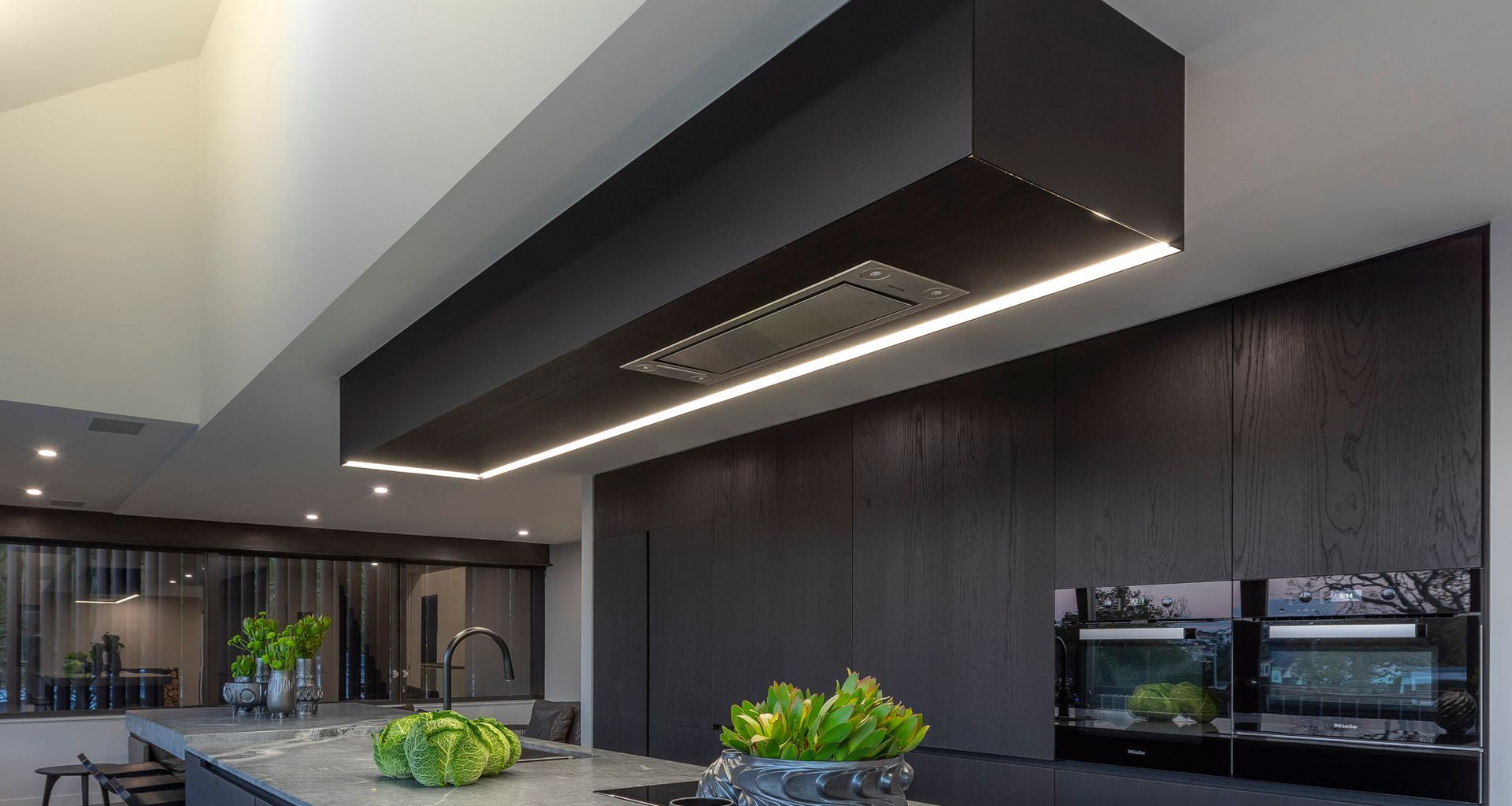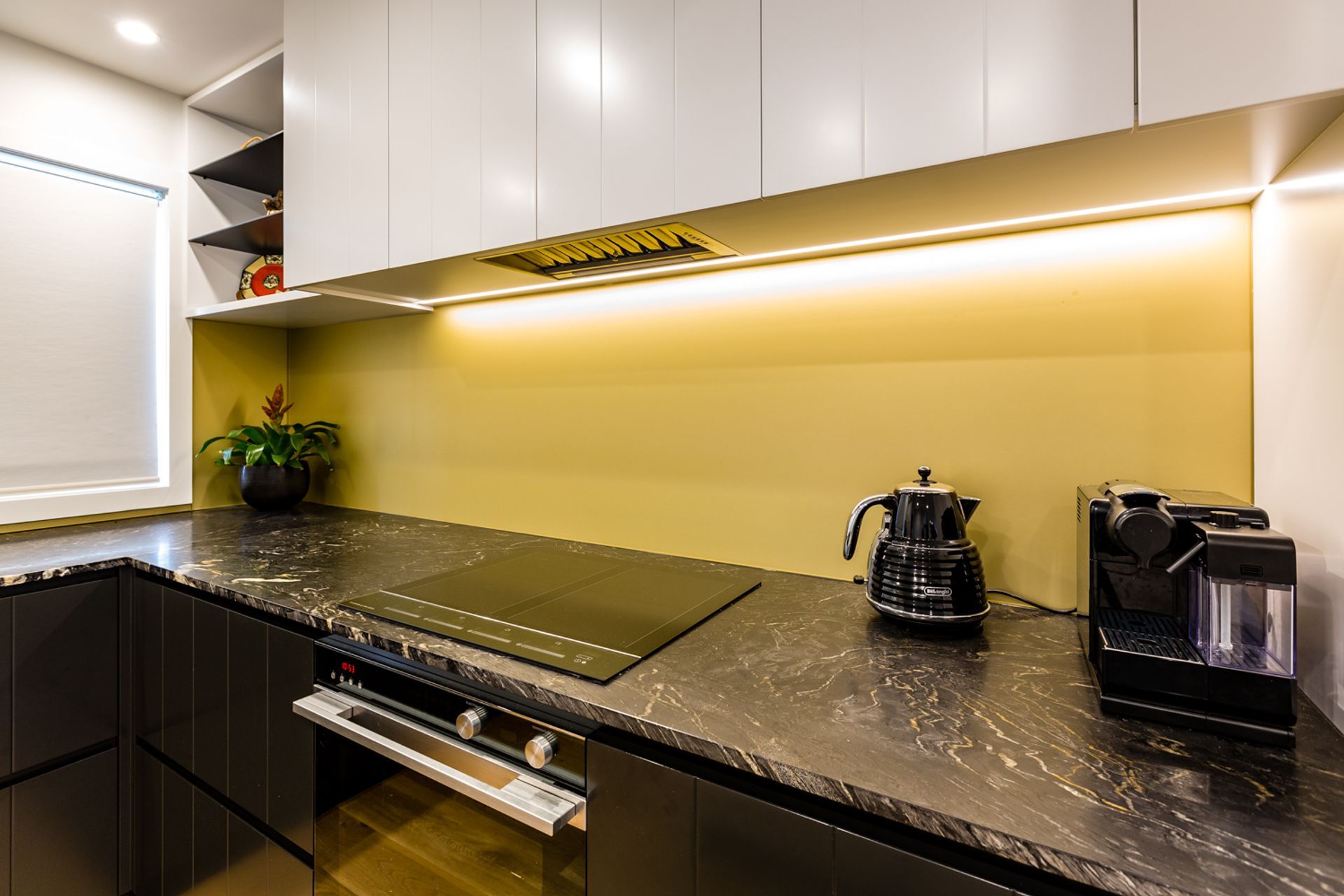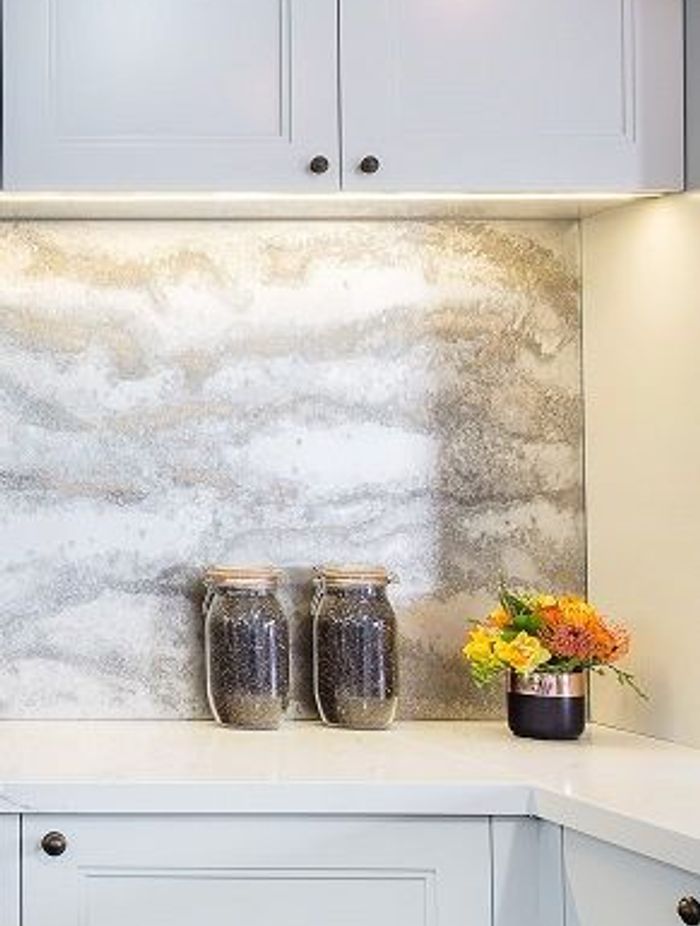Glossy vs. matt glass: what’s the difference?
Written by
03 October 2019
•
3 min read

Like frosting on a cake, matt glass has a silken opulence with a ceramic feel. We spoke to Image Glass about the benefits of this elegantly pared-back style of glass and when to specify it.
What is matt glass?
Also known as etched glass, matt glass is different to standard glass in that it does not have a glossy finish – something that is achieved by dipping the glass into an acid bath, a process known as etching. “The finished result is a glass that doesn’t reflect. It transforms the base material, making it ceramic to the touch and smoother than shiny glass,” says Image Glass’ Gina Collins.
“You can do everything with matt glass that you can do with standard glass; however, matt glass doesn’t show fingerprints or marks in the same way as glossy glass does, which is a drawcard, particularly for areas such as kitchens and bathrooms. Stylistically, it’s a much more contemporary look than traditional glass.”
Matt vs. glossy glass: how to choose the best option
Because of its ceramic-like finish, matt or etched glass is a sought after material for applications, including rangehood covers, splashbacks and kitchen cabinetry, Gina says. “The rich textural finish fits in well with other finishes in the kitchen (and bathroom) and, while it provides all the benefits of glass, it allows for a rich and seamless aesthetic complementary to many other finishes, such as stone and ceramic.”
Glossy glass colours can create bold and striking statements suitable for many applications but, when it comes to a more subtle statement, matt glass is hard to look past. “Matt glass is ideal for situations where deep, rich colours are sought, without the shine and reflection of glossy glass,” suggests Gina. “With no reflection, matt glass gives a true depth of colour that emphasises the surface finish. In lighter colours, matt glass feels opulent and sensuous.”
In contrast, darker colours on a matt finish take on a ‘flannel’ appearance, creating a unique and textural surface.
“The colour and finish of the glass chosen will depend on the rest of the interior design, what level of depth of colour is required and whether the glass is to be used as a bold and confronting statement piece or a more subtle design element.”
What finishes can be created with matt glass?
As well as back painting and printing, artificially aged or antiqued matt glass creates a dramatic and unique design feature, one that is particularly popular for statement splashbacks, Gina says. “Because of the nature of the antiquing process, no antiqued panel is the same, ensuring each piece has a completely unique character.
“The effect is almost like a holograph; it’s a more three dimensional appearance, with the patterning more pronounced than in standard matt glass finishes. This allows for a beautifully textural and more dynamic option that retains the values of standard matt glass, including the ability to conceal marks and fingerprints.”
Due to its unique veining and markings that are similar in nature to that of natural stone, antiqued matt glass is also a popular option for bathrooms and areas where tiles would otherwise be used. “By specifying this style of glass, a similar effect can be created but without the grout lines that are required for tiles, allowing for ease of cleaning and installation.”
Find out more about matt glass finishes and how to specify it by visiting Image Glass on ArchiPro here.


